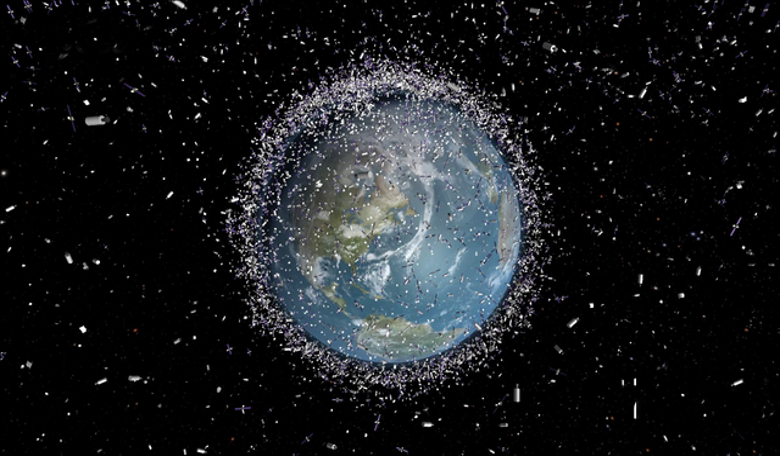Space debris is a big problem and with more and more satellites launched each year, the situation is not set to improve anytime soon. Trying to tackle the burgeoning issue of keeping the skies above our planet clear is ASTROSCALE Ltd, who have recently signed a Memorandum of Understanding with Surrey Satellite Technology Ltd (SSTL) to pursue joint missions designed to safeguard the orbital environment for future generations.
Together the companies will seek to identify ambitious debris removal projects and as a first step, ASTROSCALE has contracted SSTL to supply a “Target” satellite and avionics for its inaugural End-of-Life Service, which will simulate capture of orbital debris and is designed to validate key technologies for end-of-life spacecraft retrieval and disposal services.
This mission known as ELSA-d, comprises of a “Chaser” satellite and the Target satellite, and it will demonstrate key technologies necessary for orbital debris removal such as rendezvous & docking and proximity operations.
Currently based in Singapore, with its manufacturing facility in Tokyo, ASTROSCALE hopes to establish a long-term presence in the UK, and it has started by establishing an office and mission control centre in Harwell earlier this year.
“We are very excited to welcome SSTL to the ELSA-d mission and to begin this ambitious strategic partnership,” said Nobu Okada, Founder and CEO of ASTROSCALE. “SSTL is synonymous with reliable and cost-effective small satellites and we are thrilled that they will provide a key component to ELSA-d. We are confident that this is only the beginning of mutually beneficial long-term relationship.”
Sir Martin Sweeting, Executive Chairman of SSTL added, “We are extremely pleased to be working with ASTROSCALE, a like-minded, innovation-driven company seeking to make space business viable for commercial operators. This practical solution to debris mitigation has the potential to provide a cost-effective approach for ensuring the long-term sustainability of the space environment for all.”
The vast majority of space debris is found in a Low Earth Orbit (LEO) at an altitude of 800 - 2000 kilometres above Earth and with an estimated number of over 750,000 smaller debris pieces which are unable to be tracked from the ground, ASTROSCALE are pushing forward with the launch of IDEA OSG 1 – the world’s first in-situ space debris monitoring microsatellite in LEO.
The microsatellite will launch tomorrow (28 November) with the Russian State Space Corporation Roscosmos meteorology mission Meteor-M No2-1 at 14:41:46 (JST) from Russia’s Vostochny Cosmodrome and once operational, it will be tasked with monitoring the size and position of space debris to create debris distribution maps to better understand the space environment.











